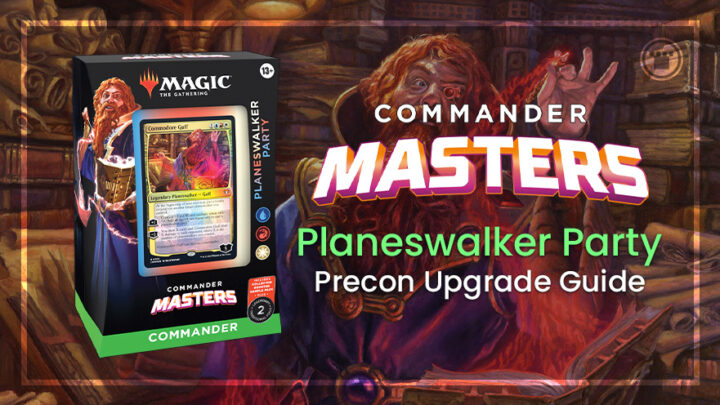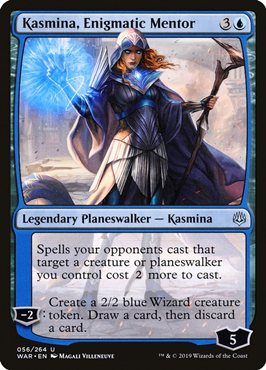Planeswalker matters decks are not one of the more popular themes fo r Commander decks. There simply hasn’t been enough support for Planeswalkers over the years for that type of deck to consistently succeed. However, Commander Master’s Planeswalker Party precon goes a long way towards remedying this, and our review and upgrade guide will take the fun to the next level.
Planeswalker Party: Reviewing the New Cards
Let’s start with a look at the deck’s face Commander: Commodore Guff. He is, of course, a planeswalker himself. Starting the game with a planeswalker in the Command Zone is great when your deck is filled with planeswalker payoffs, and every single one of his abilities involves planeswalkers, too.
Every end step he gives one of your other planeswalkers a loyalty counter. This can allow you to get to powerful ultimate abilities much more quickly, or at the very least help your planeswalkers stay around.
His +1 gives you a 1/1 token that can make mana to help you cast planeswalkers. A walker that gives you creature tokens while raising its loyalty is already quite good, because it provides protection for Guff. But I think the start of the show is his -3.
The Commodore can come down and use it immediately to draw cards and deal damage to each opponent — especially if you already have a board with a few planeswalkers. Then it’s going to provide some pretty amazing card advantage.
The deck’s other potential commander is Leori, Sparktouched Hunter. Leori comes with a great stat-line, and any time it hits your opponent you can name a planeswalker type. Then, for the rest of your turn, an ability used by any planeswalker with that type gets copied.
In the right situation, that can be incredibly powerful. Doubly so if you have multiple planeswalkers in play with the same type.
And while Leori is a great card for the deck, I prefer Guff as the Commander. A big part of this is simply that Guff is himself a planeswalker, making it easier for all the deck’s planeswalker payoffs to get going.

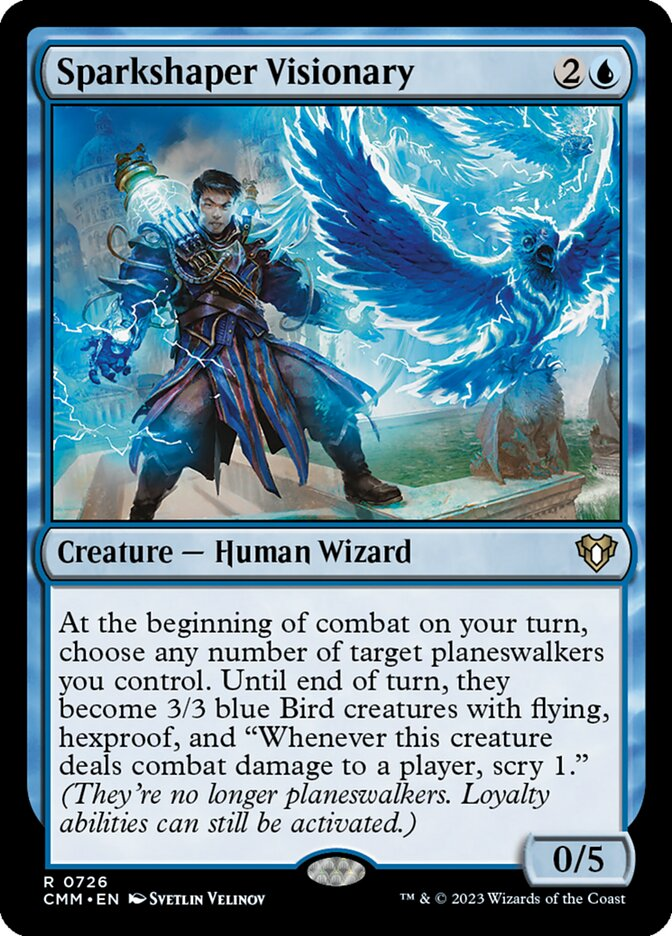
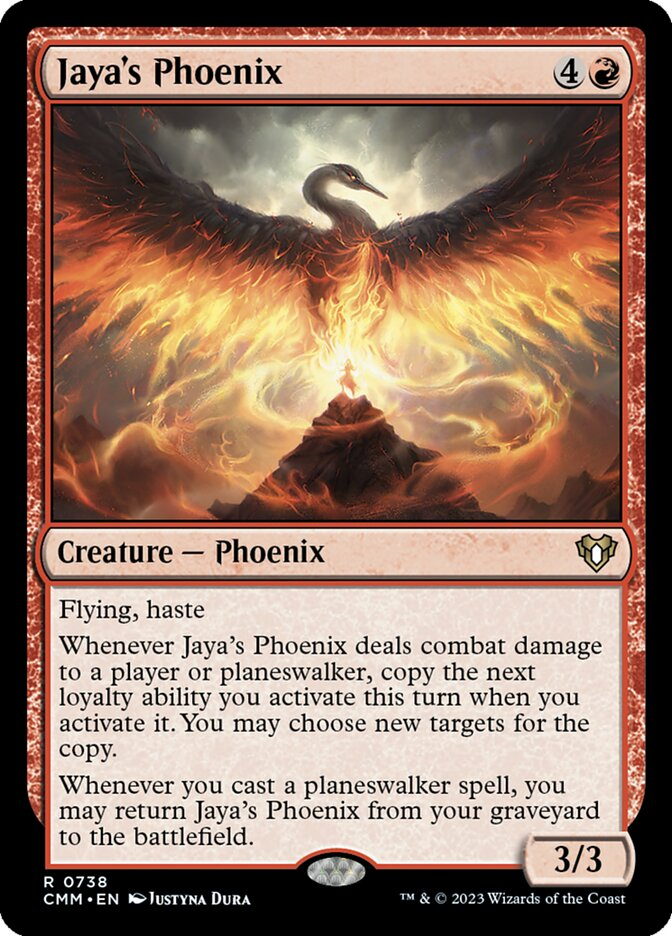
Speaking of planeswalker payoffs, this deck includes eight new ones (counting Leori and Guff), and on the whole they look really good.
Gatewatch Beacon is a three-mana mana rock. That in itself usually isn’t especially good, but it also enters with loyalty counters that it can move on to your planeswalkers when they enter the battlefield. Having a planeswalker enter with an additional loyalty counter usually offers a surprisingly powerful head start.
Onakke Oathkeeper taxes your opponents for attacking your planeswalkers and can also reanimate them from the graveyard. Sparkshaper Visionary can turn your board of clunky planeswalkers into a 3/3 flying army that lets you scry several times. Plus, both the Oathkeeper and Visionary also happen to provide nice defensive stats that can help protect your planeswalkers.
Meanwhile, if Jaya’s Phoenix hits your opponent, your next loyalty ability gets copied. Like most phoenixes it can also return from the graveyard (this one does it when you cast a planeswalker spell) with haste. That allows you to get it back and swing in with it right away, and you’re definitely going to have a planeswalker ability to copy any time you do that.
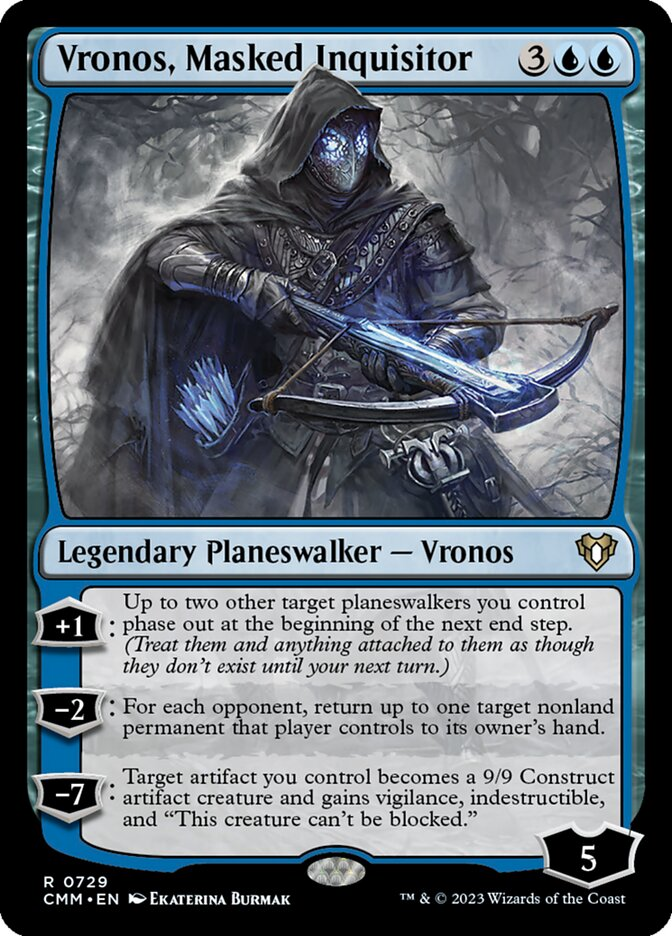

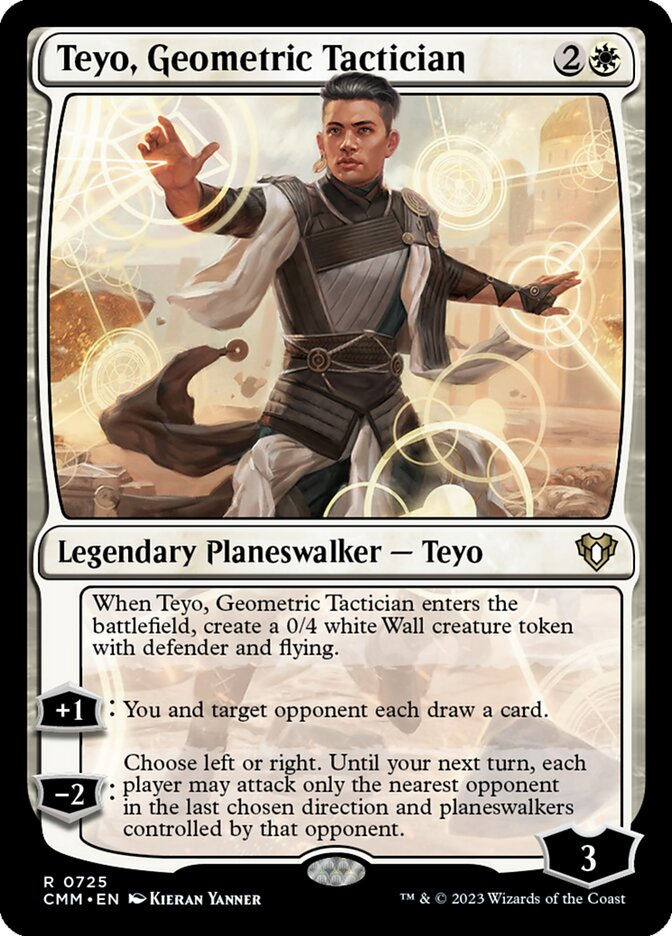
The deck also has three new planeswalkers other than Commodore Guff. Two of them also get better the more planeswalkers you have around.
Vronos can phase out your planeswalkers with his +1, which is a pretty great way to guarantee your planeswalkers are going to make it to your next turn. It can be especially spicy if you’re on the verge of firing off an ultimate ability, though. Otherwise, his -2 is also quite good, as we don’t often see an effect that lets you bounce something every opponent controls.
Of these three, Chandra, Legacy of Fire is the most planeswalker-centric. Her triggered ability gives the deck a second way to inflict damage based on the number of planeswalkers you control. So if you have a few planeswalkers in play along with Chandra and Guff, your opponents’ life totals are going to rapidly drop. Meanwhile, her +1 lets you ramp based on the number of planeswalkers you control, and her 0 ability lets you cash in loyalty counters to do “impulse” draws.
Finally, there’s Teyo, Geometric Tactician. He doesn’t come with an ability that gets inherently better with planeswalkers like Vronos and Chandra, but he does have two abilities that really help protect your planeswalkers. The 0/4 he makes when he enters can protect Teyo and your other planeswalkers, and his -2 can allow you to make it so only one player will be able to attack you or your walkers over the next turn cycle.


The final new card in the deck is Guff Rewrites History. It’s also the deck’s only new card that has nothing to do with planeswalkers. It resembles Chaos Warp, a card that has long been a staple in the format. They have the same mana cost, they are both instants, and they both shuffle permanents into libraries and then give your opponent the ability to replace that permanent.
However, Guff Rewrites History is significantly worse. First, it can’t go after enchantments or lands like Chaos Warp can. Second, it will always give your opponent a free nonland card. Part of what makes Chaos Warp great is the fact that your opponent can whiff entirely or get a land to replace the permanent.
There is one area where Guff Rewrites History is better, though. It lets you choose a permanent for every single player. This of course means you can go after all of your opponents’ best non enchantment nonland permanents all at once. While the card is very random, most of the time taking down the best permanent each other player controls is going to do more good than harm.
You can also use it to give yourself an upgrade. Choosing one of your planeswalker-generated creature tokens is a particularly good way to get value out of it. Of course, this also means that Guff Rewrites History isn’t really going to do a whole lot until the later stages of a game.
Guff Rewrites History has an inherently powerful effect, but I don’t think it is going to replace Chaos Warp as a Commander staple. It’s far more random and situational than Warp is. That said, for mono-red decks especially, it is certainly a card you’re going to want to include alongside Chaos Warp, since dealing with such a wide swath of permanents makes it a really great effect for them.
Planeswalker Party Budget Upgrades
While the deck does include many new cards that are great for the deck’s planeswalker theme, there are some budget upgrades you’re going to want to consider to upgrade the deck.

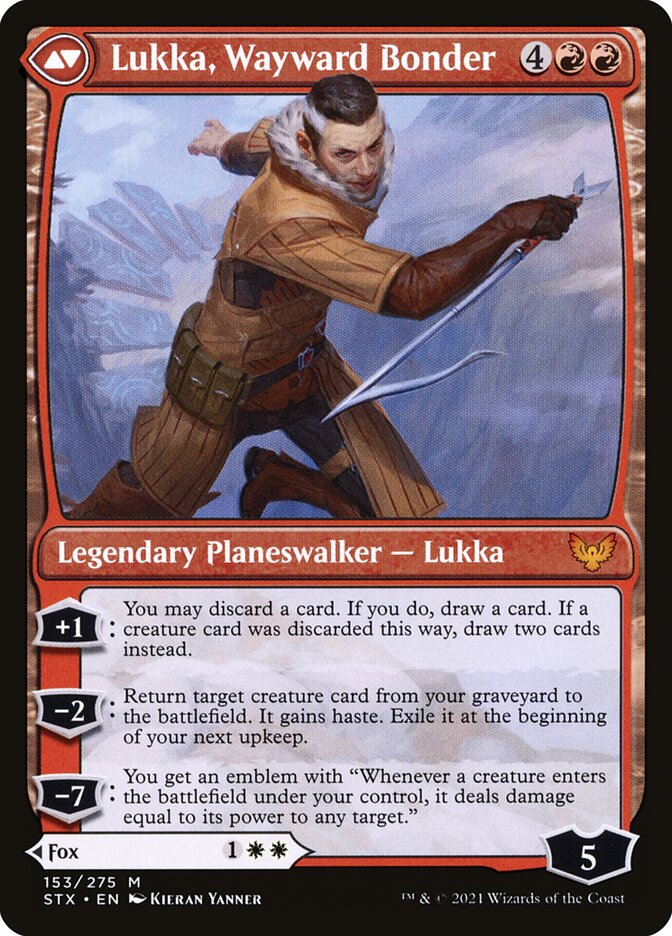
Mila, Crafty Companion was the very first card I thought of when considering budget upgrades for this deck. Mila is a modal double-faced card, so you can choose to cast it either as Mila or Lukka, Wayward Bonder.
The Mila side gives loyalty counters to your planeswalkers when they get attacked while also drawing you a card any time your opponent targets one of your permanents. Lukka doesn’t come with any planeswalker-centric abilities but that’s OK, because this deck just wants to have as many planeswalkers in it as possible.
The other budget planeswalker I want to add to the deck is Kasmina, Enigmatic Mentor. Her static ability helps protect your planeswalkers, and her ability to churn out tokens that let you loot is surprisingly powerful. Adding both Mila and Kasmina ups the deck’ planeswalker count to 19 which I think is just right.

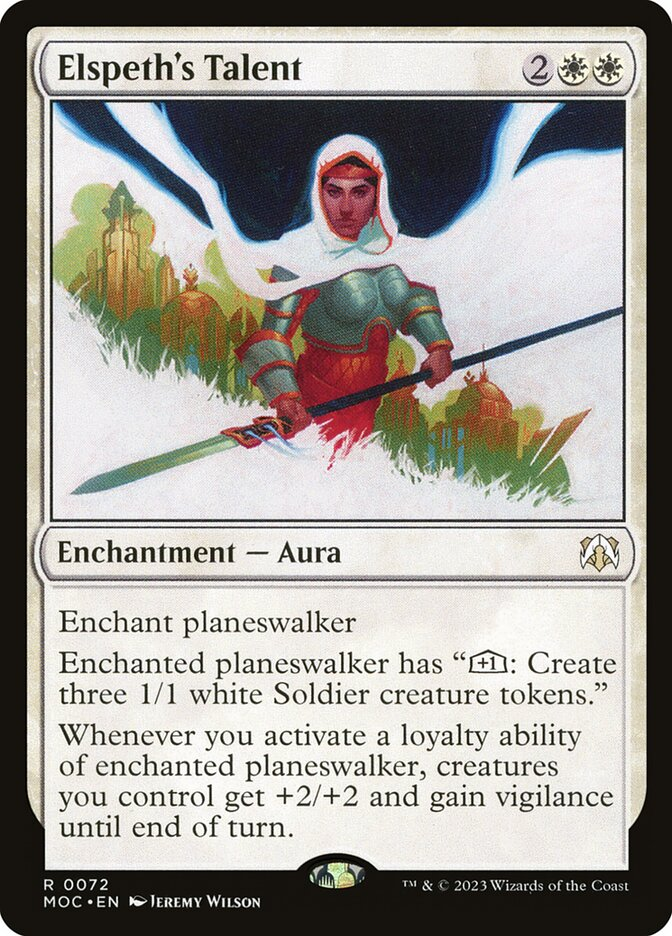

There are also three great Enchantments that make your planeswalkers much better. Deification provides excellent protection for your planeswalkers. When it enters the battlefield you choose a planeswalker type and they all get hexproof while becoming much harder to kill with combat damage. And any time one of your planeswalkers of the chosen type would die from damage, it instead hangs on with a single loyalty counter.
Elspeth’s Talent gives an enchanted planeswalker an amazing +1 ability that generates three 1/1 tokens — and that’s not all! This aura also gives +2/+2 and vigilance to your whole board any time the enchanted planeswalker uses a loyalty ability. Obviously enough, that works really well with the +1, but this deck is good at making creature tokens in general. Buffing your whole board is going to be quite effective.
Oath of Chandra is also a must-have for this deck. The precon already contains every other card from the oath cycle that a Jeskai deck can have, but Oath of Chandra got left out. That’s kind of a shame because I think it works very well in the deck.
The good news is, it costs very little for you to pick up, and it gives you a reasonably efficient removal spell while also doing two to each opponent on any turn you play a planeswalker. Guff is already good at doing direct damage to everyone, so tacking this effect on every planeswalker is pretty amazing.

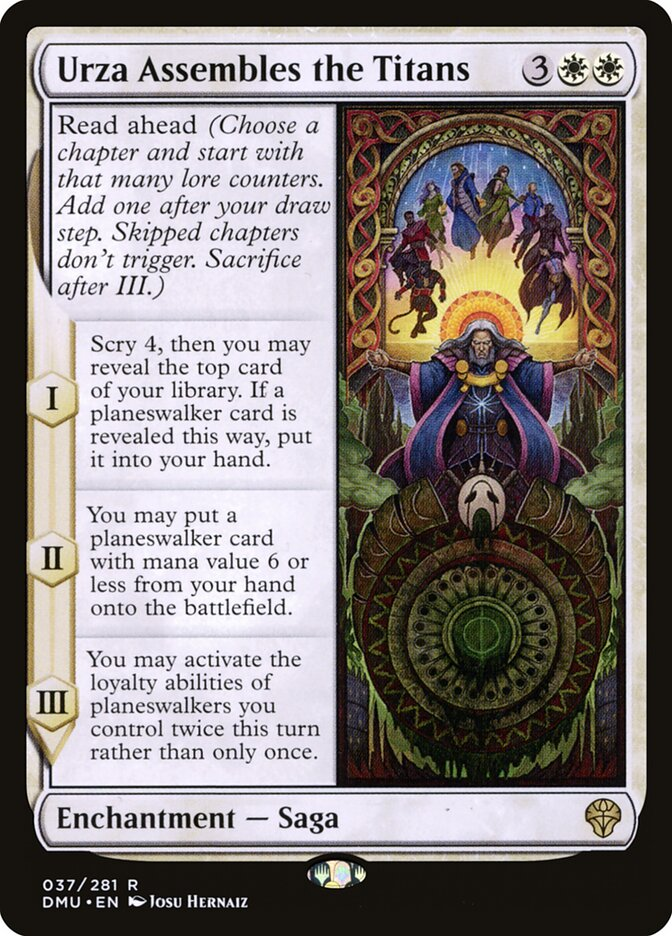
The last two upgrades I would recommend are Djeru, with Eyes Open and Urza Assembles the Titans. Djeru is a planeswalker tutor and he reduces the damage dealt to your planeswalkers. Tutors are always really nice in Commander, and searching up any planeswalker at will is going to bail you out of a lot of situations.
Urza Assembles the Titans is a saga that is all about paying you off for having a deck jammed full of planeswalkers. Chapter I is going to usually draw you a planeswalker in this deck. Unfortunately, Chapter II isn’t always going to do something as there aren’t that many planeswalkers in it that are expensive enough for it to put into play.
However, Chapter III more than makes up for that because it lets all of your planeswalkers use their abilities twice. Even if you just have two planeswalkers in play, that can end the game. And if you’ve got more than that, your opponents are going to have a very difficult time surviving.
You can find the upgrades here.
To make room for these upgrades, I removed the following cards:
- Fog Bank
- Wall of Denial
- Semester’s End
- Repeated Reverberation
- Norn’s Annex
- Honor-Worn Shauku
- Cartographer’s Hawk
End Step
That does it for me this time. If you want some more Commander Masters content, my fellow writers have it covered with more deck upgrade guides!

Jacob has been playing Magic for the better part of 24 years, and he especially loves playing Magic’s Limited formats. He also holds a PhD in history from the University of Oklahoma. In 2015, he started his YouTube channel, “Nizzahon Magic,” where he combines his interests with many videos covering Magic’s competitive history. When he’s not playing Magic or making Magic content, he can be found teaching college-level history courses or caring for a menagerie of pets with his wife.

